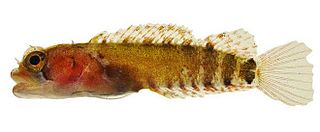
Herring are forage fish, mostly belonging to the family of Clupeidae.

The macaques constitute a genus (Macaca) of gregarious Old World monkeys of the subfamily Cercopithecinae. The 23 species of macaques inhabit ranges throughout Asia, North Africa, and Europe. Macaques are principally frugivorous, although their diet also includes seeds, leaves, flowers, and tree bark. Some species such as the long-tailed macaque will supplement their diets with small amounts of meat from shellfish, insects, and small mammals. On average, a southern pig-tailed macaque in Malaysia eats about 70 large rats each year. All macaque social groups are arranged around dominant matriarchs.

The red-rumped parrot, also known as the red-backed parrot or grass parrot, is a common bird of south-eastern Australia, particularly in the Murray-Darling Basin.

The guenons are Old World monkeys of the genus Cercopithecus. Not all members of this genus have the word "guenon" in their common names; also, because of changes in scientific classification, some monkeys in other genera may have common names that include the word "guenon". Nonetheless, the use of the term guenon for monkeys of this genus is widely accepted.

A near-threatened species is a species which has been categorized as "Near Threatened" (NT) by the International Union for Conservation of Nature (IUCN) as that may be vulnerable to endangerment in the near future, but it does not currently qualify for the threatened status.

An IUCN Red List Critically Endangered species is one that has been categorized by the International Union for Conservation of Nature as facing an extremely high risk of extinction in the wild. As of December 2023, of the 157,190 species currently on the IUCN Red List, 9,760 of those are listed as Critically Endangered, with 1,302 being possibly extinct and 67 possibly extinct in the wild.
Napaeus isletae is a species of air-breathing land snail, a terrestrial pulmonate gastropod mollusk in the family Enidae. This species is endemic to Spain.

Napaeus is a genus of air-breathing land snails, terrestrial pulmonate gastropod mollusks in the subfamily Eninae of the family Enidae.
Napaeus pygmaeus is a species of air-breathing land snail, a terrestrial pulmonate gastropod mollusk in the family Enidae. This species is endemic to La Gomera, in the Canary Islands.
Napaeus barquini is a species of air-breathing land snail, a terrestrial pulmonate gastropod mollusk in the family Enidae.
Agdistis nanodes is a moth in the family Pterophoridae. It is known from Egypt, Iran, Pakistan, Sri Lanka, Bahrain, Saudi Arabia, the United Arab Emirates, Oman and Yemen.

Starksia nanodes, the dwarf blenny, is a species of labrisomid blenny native to coral reefs of the Caribbean Sea and the adjacent Atlantic Ocean. This species can reach a length of 2.2 cm (0.87 in) SL.







